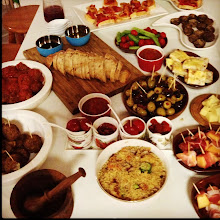Basil
is a natural source of beta-carotene, an anti-oxidant which combats free
radicals in the body, preventing damage to blood vessels and build up of cholesterol in the blood stream. Only the oxidised
cholesterol adheres to vessel walls restricting blood flow.
Free radical
action is the main factor in conditions such as Asthma, Osteoarthritis and Rheumatoid Arthritis. An
array of unique flavonoids are also
found in basil which protect cell structures and chromosomes from oxygen-based
and radiation damage.
|
The
oil extract from basil has been found to provide protection against growth of
many pathogenic bacteria which are posing a major health problem through
their resistance to commonly used antibiotics.
Another
component of basil’s volatile oils, eugenol,
is found to be effective in blocking action of an enzyme causing inflammatory
health problems such as Rheumatoid Arthritis and Inflammatory Bowel conditions.
|
When growing from a small plant, remove from the small container it arrived in and loosen the root ball to free the roots and remove the soil. Plant this in a hole approximately twice the depth and width of the ball and smooth over with soil to fill the void. Press lightly to compact the plant in place and give it a brisk watering. Basil also can be grown from seed easily in small pots then transferred to soil when 5-10 cm high.
Basil will blossom well under a semi-neglect sort of state, the only care needed is a daily watering and good drainage. There should be no plant food provided for them, just optimal growing conditions. At the end of the summer, your Basil plants will start to flower, from here, simply cut them off to keep the flavourful leaves growing. Only keep the flowers when you are ready to collect seeds for the next season.
The good thing about basil is that a few small plants will provide you with enough leaves for the entire summer. Simply clipping the largest branches about half way down will be adequate to provide you leaves for cooking whilst allowing the plant to recover good growth. Give it a good week or two before another harvest and your plant will last you a few months.
Basil should not be exposed to the last frosts of spring. If you are sowing outside, you should wait until late spring before sowing. For indoor plants, you can sow anytime.
When you harvest Basil, be sure to pick a few leaves off each plant instead of picking all the leaves off only one plant. Indoors Basil will grow all year round. You could dig up your outdoor Basil and bring it indoors before the first frosts of fall arrive.
Excessive Basil leaves can be frozen for future use or dried for use as a dried herb. When drying Basil, you should cut the stems at the level of the soil and dried in a dehydrator. You could also hang it in bunches to air dry in a warm room for about a week. The leaves can then be removed from the stems and stored in an airtight container. It will keep like this for up to a year.


No comments:
Post a Comment